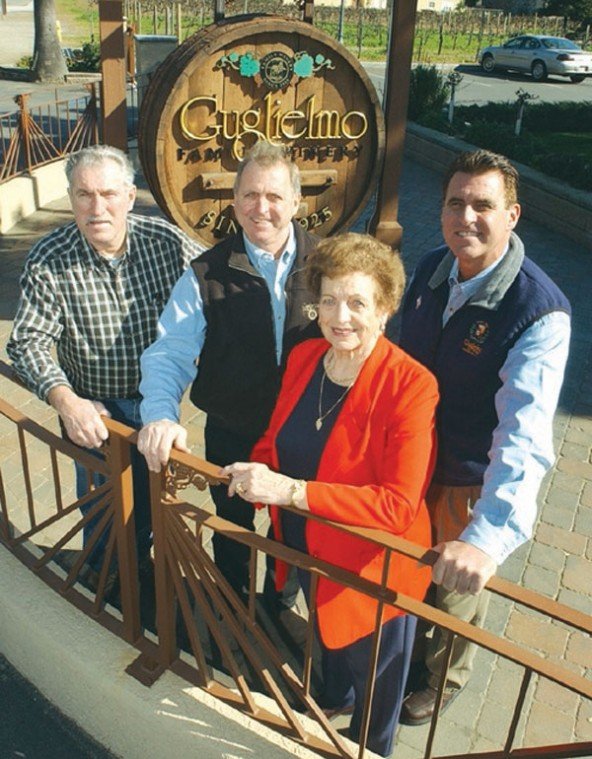January 16, 1920 was a dark day for wine lovers. That was the
day that the 18th Amendment
– the National Prohibition Act and its defining document the
Volstead Act – became the law of the land.
January 16, 1920 was a dark day for wine lovers. That was the day that the 18th Amendment – the National Prohibition Act and its defining document the Volstead Act – became the law of the land.
As a cultural phenomenon, Prohibition – also called the Great Experiment – was a dismal failure. The measure, designed to address the growing public disgust with alcohol abuse, actually made things worse. For example, during Prohibition drunken driving busts went up 81 percent.
The timing of the alcohol ban coincided with the tail end of the huge wave of immigrants coming to our shores from Europe. And seekers of the American Dream – especially those from Italy and France – had a deep-seated cultural attachment to alcoholic beverages – wine in particular. You can bet that they thought Americans were nuts to enact a law banning what to them was (and is) an essential part of life.
One such immigrant was Emilio Guglielmo (Gool-YELL-mo), who found his way to San Francisco in 1910. His particular dream was to make his fortune and return to the northern Italian town of his youth. Hardworking Emilio plied a variety of trades, and after he established himself, sent for Emilia, his childhood sweetheart, and they married. Following a family tradition, the couple began producing wine in the basement of their home for family and friends – a legal activity because The Volstead Act allowed people to make a small amount of wine for personal consumption.
Emilio and Emilia had a hunch that this Prohibition nonsense wouldn’t last forever, and in 1925 they invested in some land near Morgan Hill, in the southern end of the then-agricultural Santa Clara Valley. Emilio began growing grapes there, and built a small house on the property. Apparently, his production grew beyond the limits of the law, because he put a trap door under his bed that led to his wine cellar to keep it out of the sight of the local Untouchables. He would deliver the wine to his customers in the city in barrels.
By the time the anti-alcohol lobbies finally cried “Uncle!” and the 19th Amendment – “Repeal” – went into law on Dec. 5, 1933, the Guglielmos were running a thriving business. The basement was enlarged (and an outside door added, since there was now no need for subterfuge) and the family got down to serious business, a prosperous enterprise that is run today by three of Emilio’s grandsons.
George is the oldest, and is the Guglielmo winemaker. Gene and Gary both work in the business end of things. They grew up in the old house here, and all three have been involved in the winery their entire lives, doing everything from construction (the cement floors and walls of the property are peppered with handprints of increasing size pressed by the growing boys) to fruit picking to pulling hoses in the winery to delivering wine.
Wine delivery was an important service in the old days. Guglielmo’s customers were for the most part the French and Italian immigrants mentioned earlier. The family would deliver gallon jugs – minimum 20 – right to your doorstep. Alternatively, customers could go to the neighborhood grocery or make the trip to Morgan Hill to fill up their jugs. All three Guglielmos worked as delivery boys. Gary told me that there are a couple of elderly customers to whom they make deliveries to this day.
The old barrel room is still in use; it contains old-style oval barrels with distinctive concave heads. They are beautiful in a way that only objects that have been well-used and cared for can be, and are stained with generations of grape juice. The brothers’ parents lived in the house until the 1980s.
This is most definitely a family operation in the finest sense of the term. There is a warm, inviting sense to the place, as if you are being welcomed by a large and boisterous Italian family – which you are. There is a palpable sense of pride in place that comes from George, Gene and Gary’s having grown up here. Indeed, all three live within two miles of the winery.
Until the late 1960s, Guglielmo labeled its red wine simply as “Burgundy.” Prior to that time it was not yet the custom of most winemakers to market their wines as varietals rather than a style of wine. George produced the first of the winery’s flagship Pinot Sirah in 1969 and today Guglielmo makes several varietals in three tiers – Guglielmo Private Reserve, Villa Emile and Emile’s Table Wines.
Guglielmo is a big player in Morgan Hill and other communities. They give back in many ways, from sponsoring events and fundraisers to providing space for the local Boy Scouts to store their parade float.
As a tribute to the past, the winery has recently begun “Cork Equity Days,” providing customers the opportunity to bottle their own wine, put a cork in it and affix the label. Patrons are encouraged to bring their own recycled bottles (instructions for cleaning used wine bottles are on the Guglielmo Web site at www.guglielmowinery.com) or new ones can be purchased. One such day is today, November 13 from 10am to 3pm. A nostalgic label from the winery’s early days has been resurrected for the blend, called Cavalcade.
If you stop by Guglielmo, ask to see the trapdoor. It’s a fascinating bit of California wine lore, and a reminder of one of the United States’ failed experiments in social modification.












